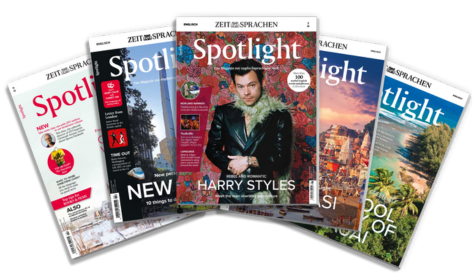Alex K.: "How can I make a presentation more interesting?"
Dear Ken
Do you have any tips on how to make a presentation to a customer more interesting or funnier?
All the best to you, Ken!
Philipp T.
Ken Taylor: "When time is short, leave out the theory, not the example"
Dear Philipp
Each presenter has his or her own style, and you need to feel comfortable with what you are doing. However, having said that, here are ten things you can do to make your presentations more interesting for your listeners.
-
Have a good opening that clearly tells the audience what the goal of the presentation is.
-
Tell your audience why they should listen to you. What’s in it for them? The clearer the benefitVorteil, Nutzenbenefits are, the more likely it is that people will listen to you.
-
Keep your sentences short. Use everyday language and avoid clichés and overused buzzwordSchlagwortbuzzwords.
-
Make your audience feel part of the presentation. Ask for their opinions, experience and agreement. Use inclusive language — “we” or “you” instead of “I”.
-
Use quotes to to back upstützenback up your ideas; statistics (especially if they are surprising) to prove your case; and analogies to create memory hookMerkhilfememory hooks. For example: “Ideas are like children — you love your own.”
-
Give practical examples of what you are talking about, especially from your audience’s world. Examples illustrate your message more clearly than theoretical descriptions. When time is short, leave out the theory, not the example!
-
Use humour carefully. Humour needs to be understandable, culturally acceptable — and funny! Make sure that you are not pointing the finger at anyone. The safest person to to poke fun at sb.sich über jmdn. lustig machenpoke fun at is yourself.
-
Don’t to drownertränkendrown your audience in PowerPoint slides. Turn the screen off occasionally and talk without a slide. Your words then carry more weight. And remember that one picture on a slide is worth a thousand words.
-
Use signpostingwegweisendsignposting language. Tell your audience when you are going to change the subject. For example: “So we’ve looked at… Now, let’s move on to...”
-
Summarize your key messages at the end and make a final memorableeinprägsammemorable statement; for example: “If there is one thing you should remember, it’s...”
I hope you find this of help.
Regards
Ken
Do you have a question for Ken Taylor?
Send your questions about business English by e-mail with “Dear Ken” in the subject line to: language@spotlight-verlag.de
Each month, I answer two questions Spotlight readers have sent in. If one of them is your question, you’ll receive a copy of my book: Dear Ken... 101 answers to your questions about business English. So don’t forget to add your mailing address.
Related audio and exercise
Explore the topic further by following these links:
Exercise: Interesting presentations
Audio: An audience-friendly presentation
Neugierig auf mehr?
Dann nutzen Sie die Möglichkeit und stellen Sie sich Ihr optimales Abo ganz nach Ihren Wünschen zusammen.



